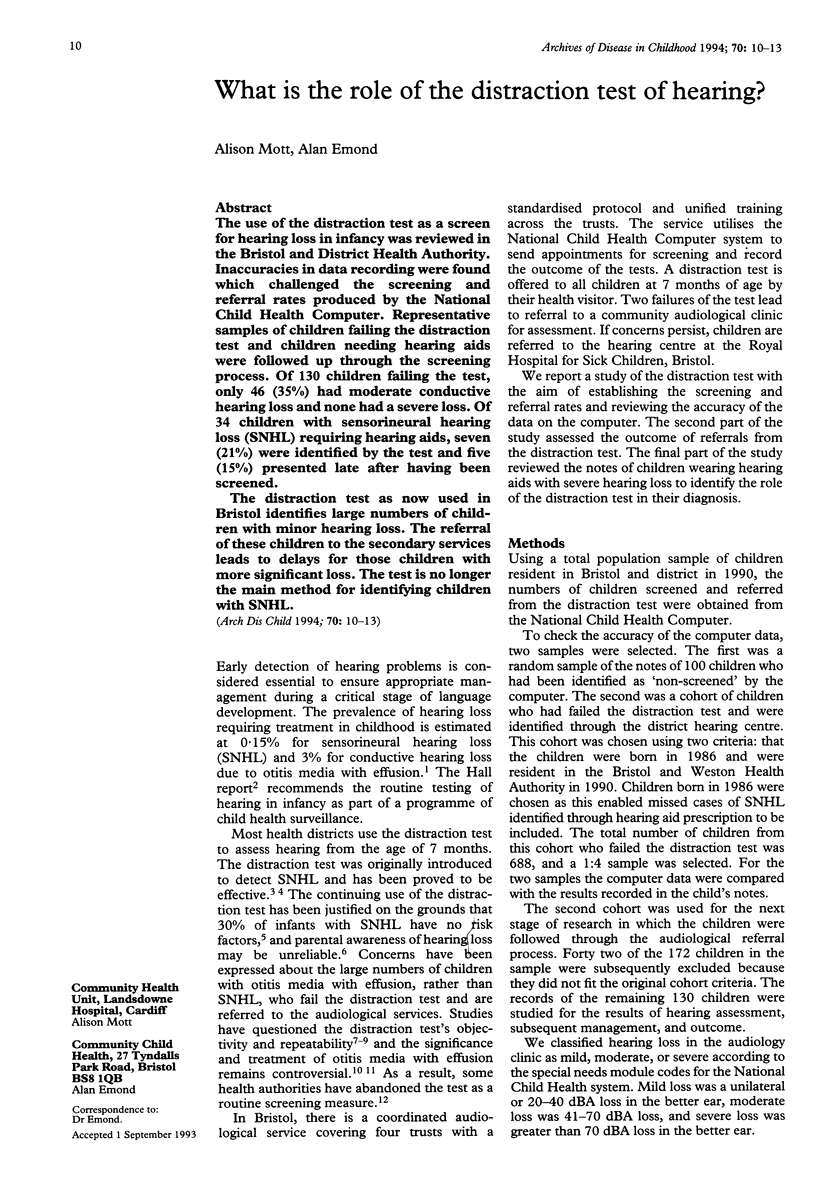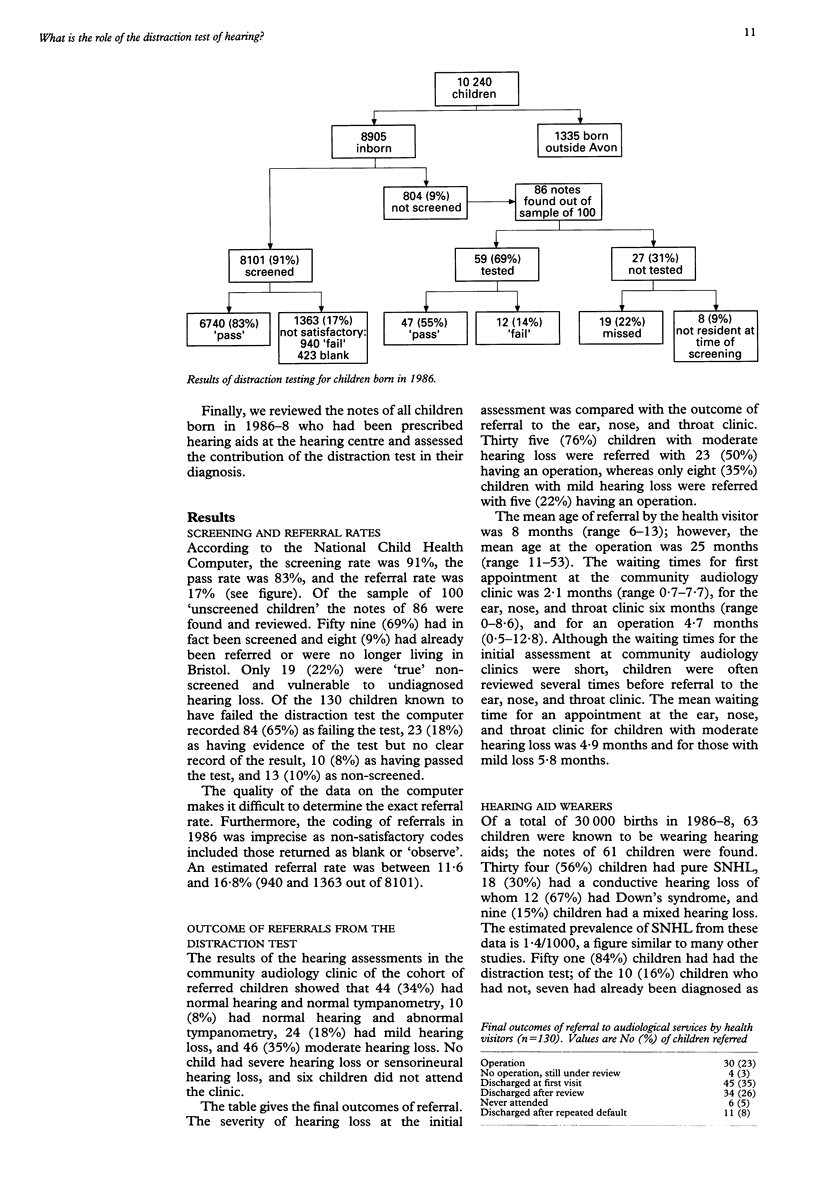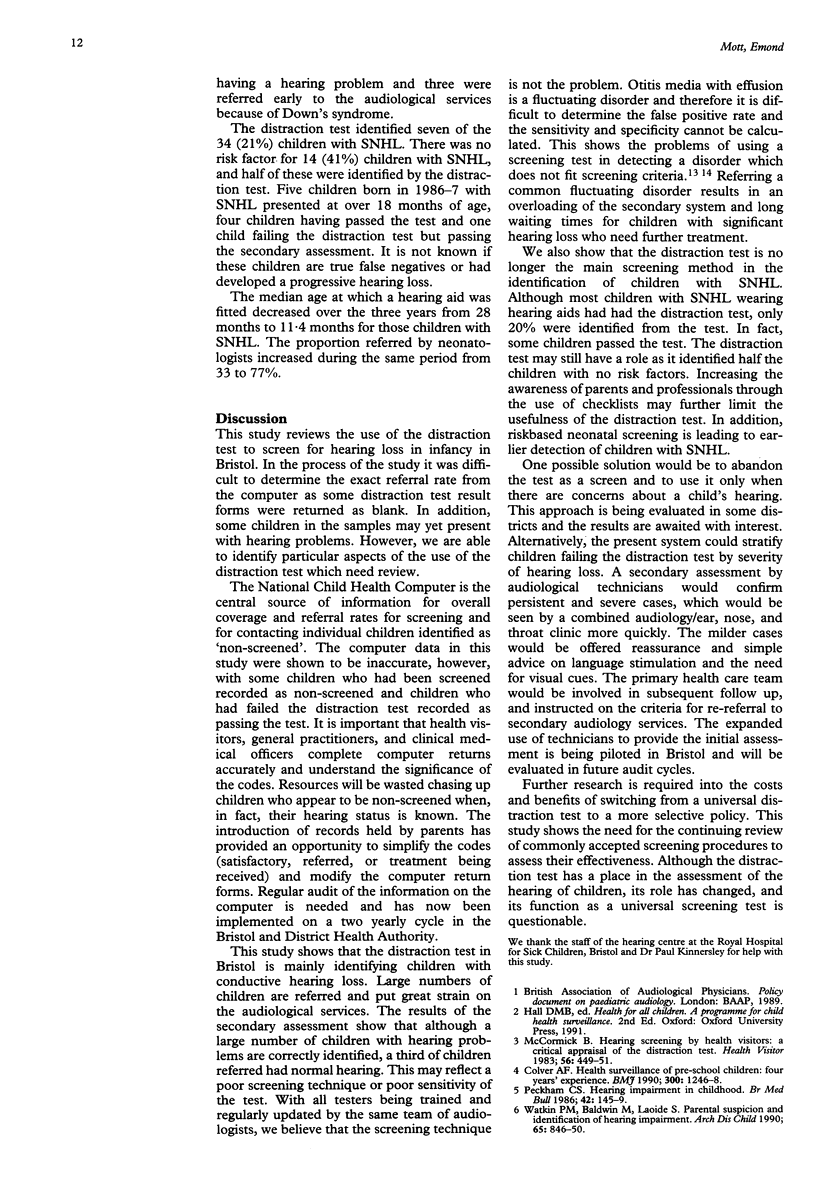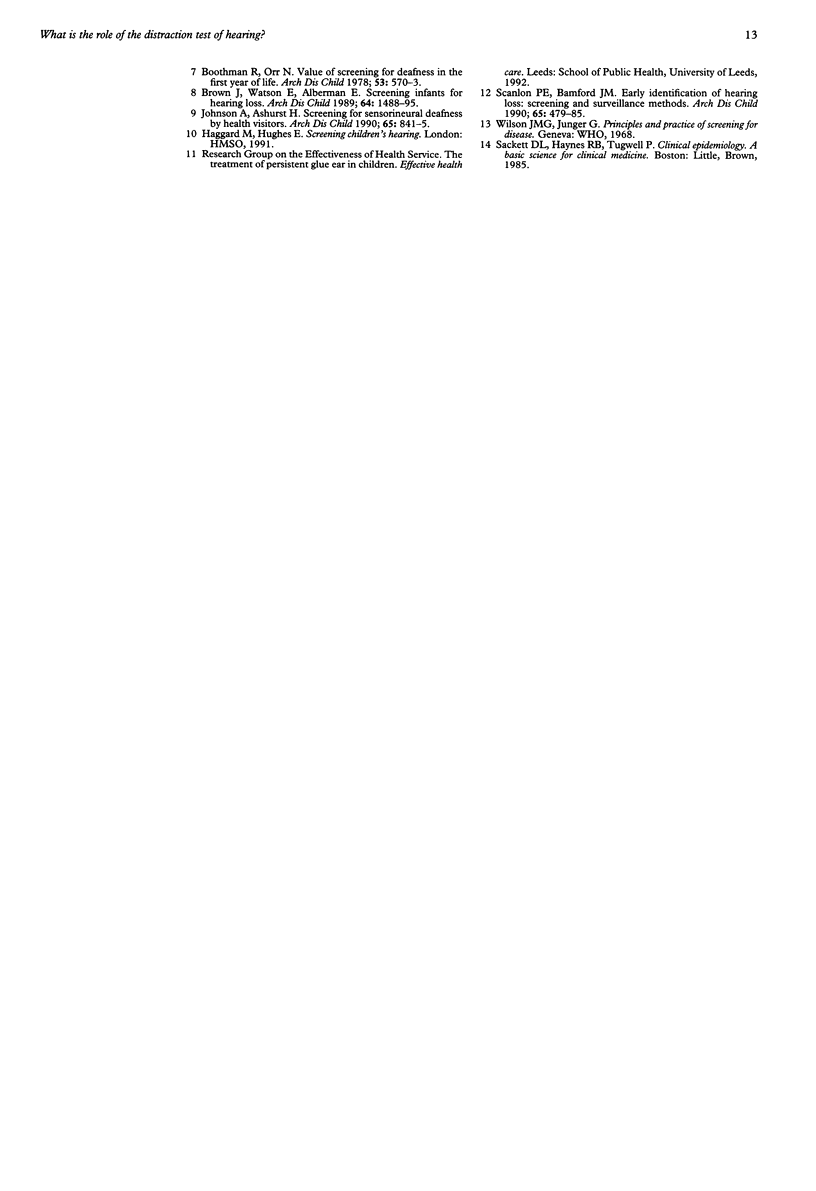Abstract
The use of the distraction test as a screen for hearing loss in infancy was reviewed in the Bristol and District Health Authority. Inaccuracies in data recording were found which challenged the screening and referral rates produced by the National Child Health Computer. Representative samples of children failing the distraction test and children needing hearing aids were followed up through the screening process. Of 130 children failing the test, only 46 (35%) had moderate conductive hearing loss and none had a severe loss. Of 34 children with sensorineural hearing loss (SNHL) requiring hearing aids, seven (21%) were identified by the test and five (15%) presented late after having been screened. The distraction test as now used in Bristol identifies large numbers of children with minor hearing loss. The referral of these children to the secondary services leads to delays for those children with more significant loss. The test is no longer the main method for identifying children with SNHL.
Full text
PDF



Selected References
These references are in PubMed. This may not be the complete list of references from this article.
- Boothman R., Orr N. Value of screening for deafness in the first year of life. Arch Dis Child. 1978 Jul;53(7):570–573. doi: 10.1136/adc.53.7.570. [DOI] [PMC free article] [PubMed] [Google Scholar]
- Brown J., Watson E., Alberman E. Screening infants for hearing loss. Arch Dis Child. 1989 Oct;64(10):1488–1495. doi: 10.1136/adc.64.10.1488. [DOI] [PMC free article] [PubMed] [Google Scholar]
- Colver A. F. Health surveillance of preschool children: four years' experience. BMJ. 1990 May 12;300(6734):1246–1248. doi: 10.1136/bmj.300.6734.1246. [DOI] [PMC free article] [PubMed] [Google Scholar]
- Johnson A., Ashurst H. Screening for sensorineural deafness by health visitors. The Steering Committee, Oxford Region Child Development Project. Arch Dis Child. 1990 Aug;65(8):841–845. doi: 10.1136/adc.65.8.841. [DOI] [PMC free article] [PubMed] [Google Scholar]
- McCormick B. Hearing screening by health visitors: a critical appraisal of the distraction test. Health Visit. 1983 Dec;56(12):449–451. [PubMed] [Google Scholar]
- Peckham C. S. Hearing impairment in childhood. Br Med Bull. 1986 Apr;42(2):145–149. doi: 10.1093/oxfordjournals.bmb.a072112. [DOI] [PubMed] [Google Scholar]
- Scanlon P. E., Bamford J. M. Early identification of hearing loss: screening and surveillance methods. Arch Dis Child. 1990 May;65(5):479–485. doi: 10.1136/adc.65.5.479. [DOI] [PMC free article] [PubMed] [Google Scholar]
- Watkin P. M., Baldwin M., Laoide S. Parental suspicion and identification of hearing impairment. Arch Dis Child. 1990 Aug;65(8):846–850. doi: 10.1136/adc.65.8.846. [DOI] [PMC free article] [PubMed] [Google Scholar]


